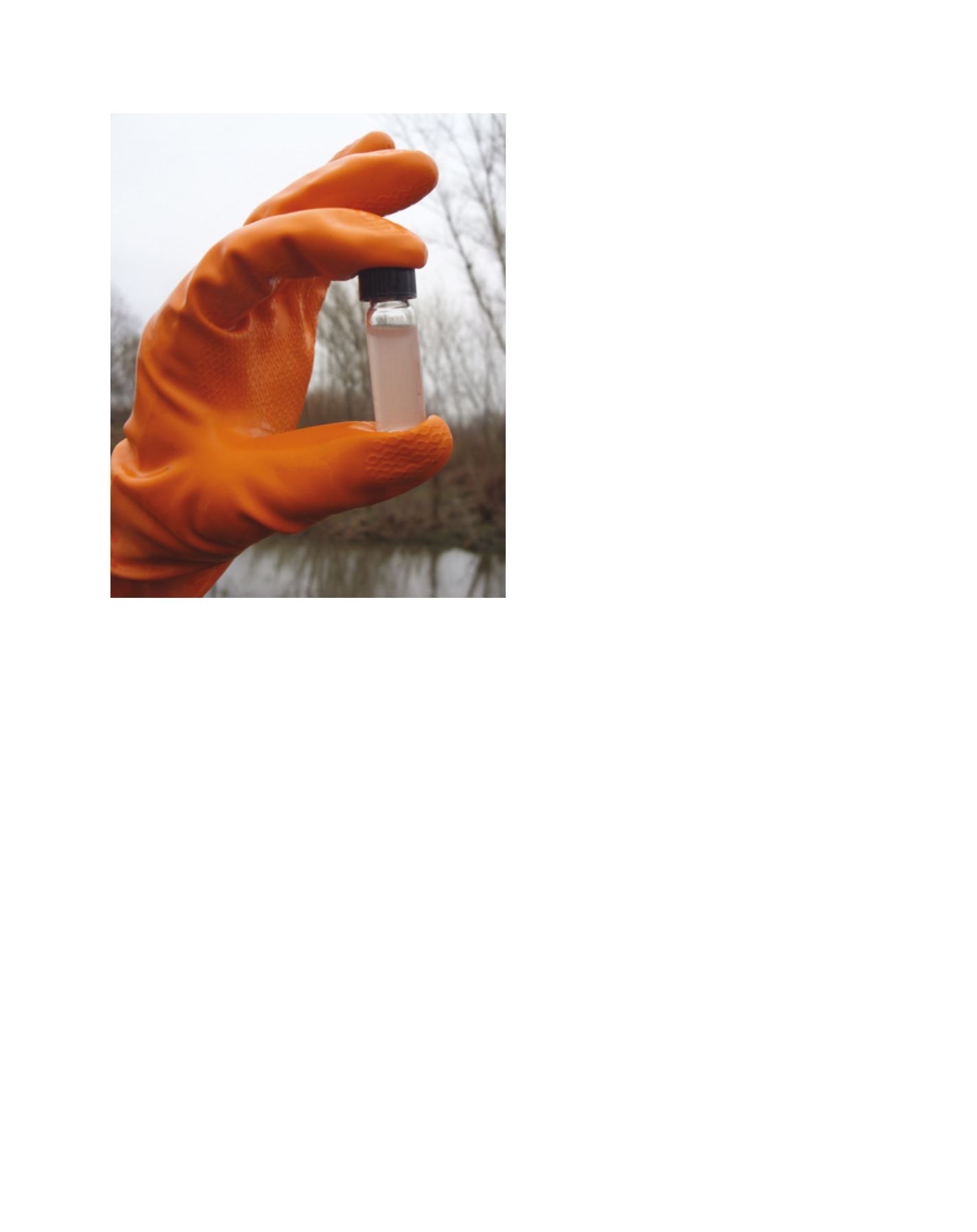

improve the situation in rural Moldova by mobiliz-
ing citizens and authorities to realize and respect the
right to access safe water and sanitation through the
sustainable management of local resources. Such imple-
mentations included maintaining clean water sources
to improve human health, which helps to maintain the
environmental integrity of aquatic ecosystems.
The main strategy for achieving these objectives
was to promote the participatory practice of includ-
ing the local population in educational (workshops,
training) and practical activities (testing and mapping
the wells, identifying sources of pollution, cleaning),
and demonstrating solutions (such as Ecosan toilets)
for effective and affordable water protection in rural
areas. In each community a village committee was
established which included the mayor, the school
director, one or two teachers, one or two parents, and
children’s representatives involved in a water safety
plan (WSP). The village committee was responsible
for project activities, implementation and commu-
nication with the village inhabitants and the local
NGO partner.
The water quality measures were shown on maps
which were available in the village halls, and people
can now avoid the most polluted sources of water.
The activities had a visible impact on the community’s
behaviour: no more solid waste is dumped near the
public or private wells. Spring cleaning of wells is once
again a tradition in the communities where awareness
was raised during the project. The number of leaflets
distributed, wells tested, and meetings and workshops
held, have all superseded the original planned numbers
and now serve as parts of a toolbox for the people of the
Republic of Moldova.
Public participation was a determinant factor in the
success of the project. Another factor was the authori-
ties’ support and participation. The initiative involved
local, regional and national authorities in all the activi-
ties and found that their support motivated public
participation. In this particular project, the importance
of involving authorities in the activities was crucial for
achieving the project objectives and ensuring sustain-
ability. Developing activities with national authorities
at all levels was a way to guarantee that activities were
both coherent with the local community’s needs and
sustainable after the project was finished.
Public institutions, the regional council and the
teaching inspectorate supported project activities,
and their regional representatives were present in the
communities during the core activities. This strat-
egy was sent to the ministries of environment and
health and some of the proposals were integrated
in the national strategy for water protection: the
WSPs were recognized by the national authorities as
an effective tool in water protection at community
scale and are recommended by national authorities
to be implemented in rural communities in order
to protect water resources by identifying risks and
reducing sources of pollution.
The Safe Water and Sanitation for all in Moldova Initiative
The Republic of Moldova, with a total population of 3.56 million
people, is one the poorest countries in Europe, with a gross domestic
product (GDP) of US$7 billion. According to World Bank data in
2005, only 4 per cent of the rural population had a sewerage connec-
tion and only 55 per cent of the total population had access to basic
sanitation (a pit latrine with a lid). However, even having access
to a house connection did not mean having access to safe water.
Indeed, the Moldovan National Environmental Action Plan calcu-
lated the social and economic impact of water pollution and reached
the conclusion that polluted drinking water (rural and urban) led
to between 950 and 1,850 premature deaths and 2-4 million sick
days annually. The cost to the economy was assessed to be 5-10 per
cent of GDP. According to Moldova’s Ministry of Health, poor water
quality is responsible for 25 per cent of acute diarrhoeal diseases,
hepatitis A, and 15 per cent of non-infectious diseases registered in
the republic. The most widespread diseases caused by the consump-
tion of poor quality water are chronic nitrate intoxication, dental
fluorosis and gastrointestinal diseases.
Rural citizens in the Republic of Moldova rely on small-scale
water supply systems or shallow wells which can be contaminated
with microorganisms and nitrates. In rural Moldavian communities,
severe nitrate contamination of wells is common and animal and
human excreta are the main sources of contamination. Illegal waste
dumping, of which 45-50 per cent is animal waste, often leads to
surface water pollution and unsightly areas.
The Safe Water and Sanitation for all in Moldova initiative
was started by non-governmental organization (NGO) Ormax to
Protecting natural systems can help ensure a high-quality water supply
Image: Ormax ACT
W
ater
C
ooperation
, S
ustainability
and
P
overty
E
radication
195


















